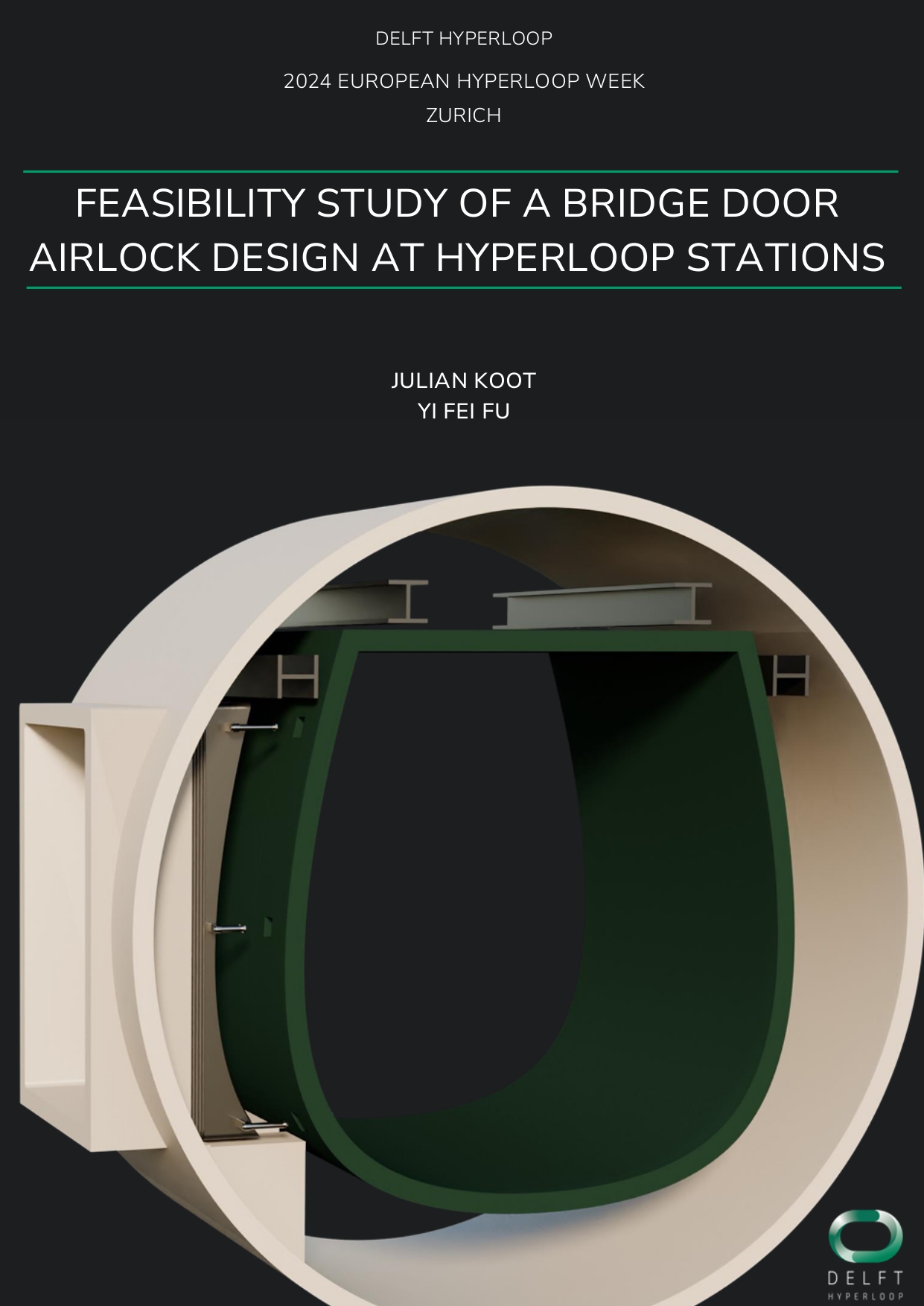The hyperloop system represents a novel mode of transport, offering high-speed and efficient travel by operating in a near-vacuum environment within a tube infrastructure. This paper addresses the critical challenge of passenger boarding in the near-vacuum tubes by using bridge door airlock systems.
Introduction
The focus of this report lays on optimizing boarding time and energy consumption through efficient pressurization of small volumes. The design and analysis of a bridge door airlock system are explored, emphasizing the sealing and locking mechanisms which ensure safety in the hyperloop system.
The Airlock
A hollow O-ring cord is employed as the sealing solution to form a barrier between the pod and the vacuum environment. The hollow profile makes the O-ring more compressible at lower forces than filled variants, allowing for a more lightweight and efficient airlock system. This compressibility accommodates tolerances, enabling the airlock to function despite minor imperfections. Additionally, the internal pressure of the hollow profile preserve the structural integrity of the seal when compressing in vacuum. Regarding material, EPDM is chosen for its durability and adaptability to various environments, including soft-vacuum. 2D simulations using finite element analysis (FEA) determine the seal’s deformation and behavior when compressed against the hyperloop pod’s exterior. While physical testing is conducted measuring compression forces, and assessing air leakage to evaluate the seal’s potential for safe and efficient application.
Conclusion
Six different locking mechanisms were considered to prevent airlock detachment in case of system failure. The bayonet locking mechanism, selected through a Multi-Criteria Analysis (MCA), stands out for its simplicity and robustness, using an extend-and-turn principle to secure the latch in its slot. An iterative design process for the latch, slot, and connection between the airlock and locks was conducted, with structural Finite Element Method (FEM) simulations, validating a suitable design for the hyperloop bridge door airlock safety locking system.
When the mechanisms are optimized and the sealing and locking systems are proven safe and efficient, it is highly recommended to implement the bridge door airlock system to reduce the boarding time of hyperloop pods. This improvement can significantly increase the network’s capacity, allowing for a departure frequency of every two minutes per platform, thereby decreasing the necessary infrastructure and enhancing the full-scale potential of a hyperloop network.

No responses yet